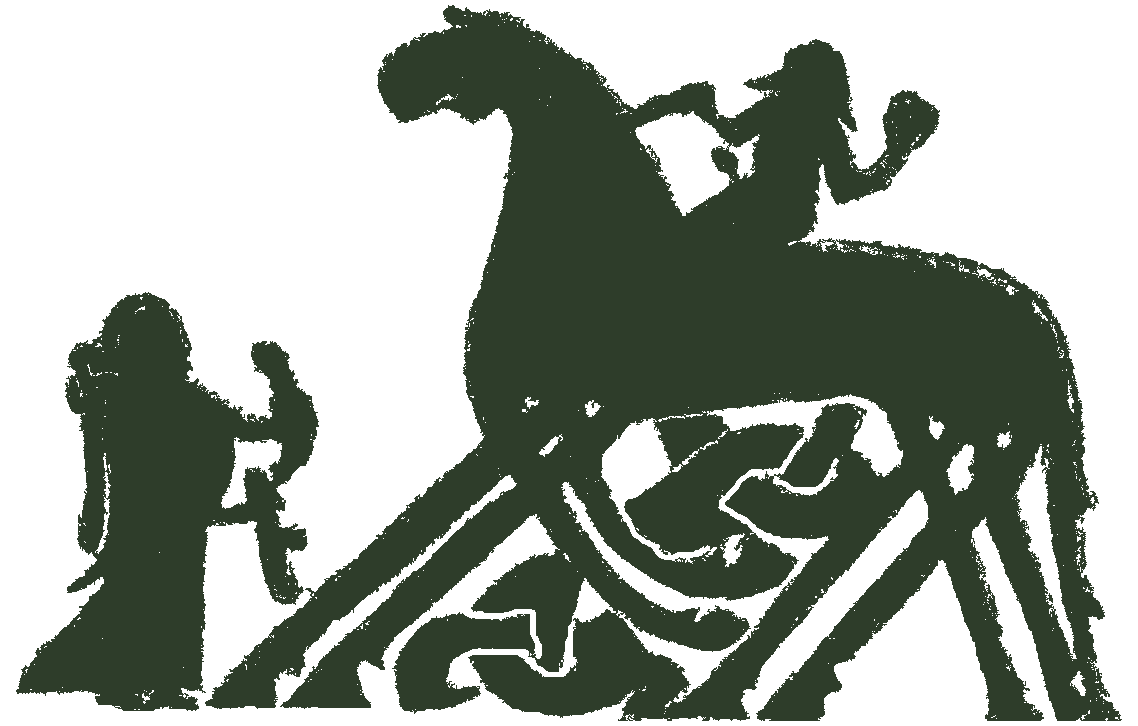in progress
A description of the devestating Fimbulvetr, the endless winter leading towards Ragnarök, the end of the world.
text
Gylf ch. 51e
51e. Fimbulvetr
Þá mælti Gangleri: "Hver tíði... | Then spoke Gangleri: 'What in... |
[status: unverified copy]
commentary
context
Gylfaginning, which is part of Snorra Edda, was composed in Iceland in the 13th century, and holds the stories of many of the Pre-Christian myths of northern Europe. It is believed to have been composed by the Icelander Snorri Sturlusson. Snorra Edda consists of three separate parts, Gylfaginning, Skaldskápamál and Háttatal, all functioning together as a greater work and guide for the aspiring medieval poet and storyteller.
commentary
ON: Fimbulvetr, the EN: “enormous/terrible/mysterious winter“ is the startingpoint towards the fall of the world, Ragnarök, according to Snorri. In Vafþrúnismál 44 is refers to as being Ragnarök.
Not many mythological parallels to this concept exist, but the Iranean-Manochaetic myth may have similar ideas. Furthermore, the sun as a symbol of crucial religious importance, connected to ideas of fertility and prosperity, is evident in the archaeological record throughout Scandinavian prehistory. This is seen in, for example, Scandinavian Bronze age rock carvings as well as in early iron age Gotlandic picture Stones.
The origins of mythological ideas of this never-ending winter and struggle may however have its origins in known climatic changes which affected European iron age societies greatly in the 6th century AD. At this time, large scale volcanic eruptions created a dust veil disrupting the sun for a very long time, affecting temperatures greatly and harming agricultural growth. Archaeological evidence presents large areas of Scandinavian long-term settlements abandoned in this time as well as an increasing early urbanisation of settlement, possibly forcing people to pool resources at a much higher level than before for survival.
For more, see:
Andrén, A. (2014). Tracing Old Norse cosmology: The world tree, middle earth, and the sun from archaeological perspectives. Lund: Nordic Academic Press.
Gräslund, Bo, & Price, Neil. (2012). Twilight of the gods? The ‘dust veil event’ of AD 536 in critical perspective. Antiquity, 86(332), 428-443.
Hultgård, A. (2003), ´Fimbulvinteren ‑ ett mytmotiv och dess tolkning. Saga och sed, pp. 51-69.
Simek, R. (2007), Transl: Angela Hall. Dictionary of Northern Mythology. Cambridge: D.S. Brewer. pp. 83
Steinsland, G. (2005), Norrøn Religion. Myter, Riter, Samfunn. Oslo: Pax Forlag. pp 122
(Contributed by Liv Marit Aurdal.)
tags
Main text: Gylfaginning
Attributes: Battle storms, bad weather Winter Death Weather Nature phenomenon Natural Phenomenon Sword Wolf Cosmology Ragnarök
Named things:
Text sections: SnSt, Gylf ch. 51e
